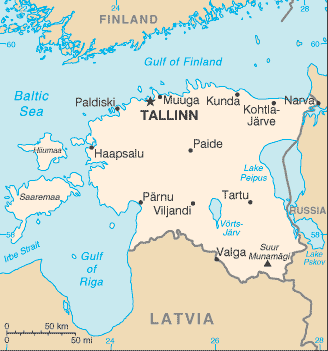Republic of Estonia


Estonia
Capital: Tallinn
Population: 1,266,375
Languages: Estonian, Russian
Historically dominated by various European powers, Estonia was later incorporated into the Russian Empire, but achieved independence in 1918, after World War I and the Bolshevik Revolution in Russia. Later invaded and occupied by Soviet troops in 1940 as part of the Molotov-Ribbentrop Pact and lead-up to World War II, Estonia subsequently became known as the Estonian Soviet Socialist Republic and was part of the USSR until the latter’s collapse in 1991. In the decades since, Estonia has moved closer, politically and economically, to Europe, joining both NATO and the European Union in 2004. A burgeoning democracy and market economy, Estonia has worked in recent years to normalize its borders and relations with Russia, while continuing to revive its national language, traditions, and culture.


